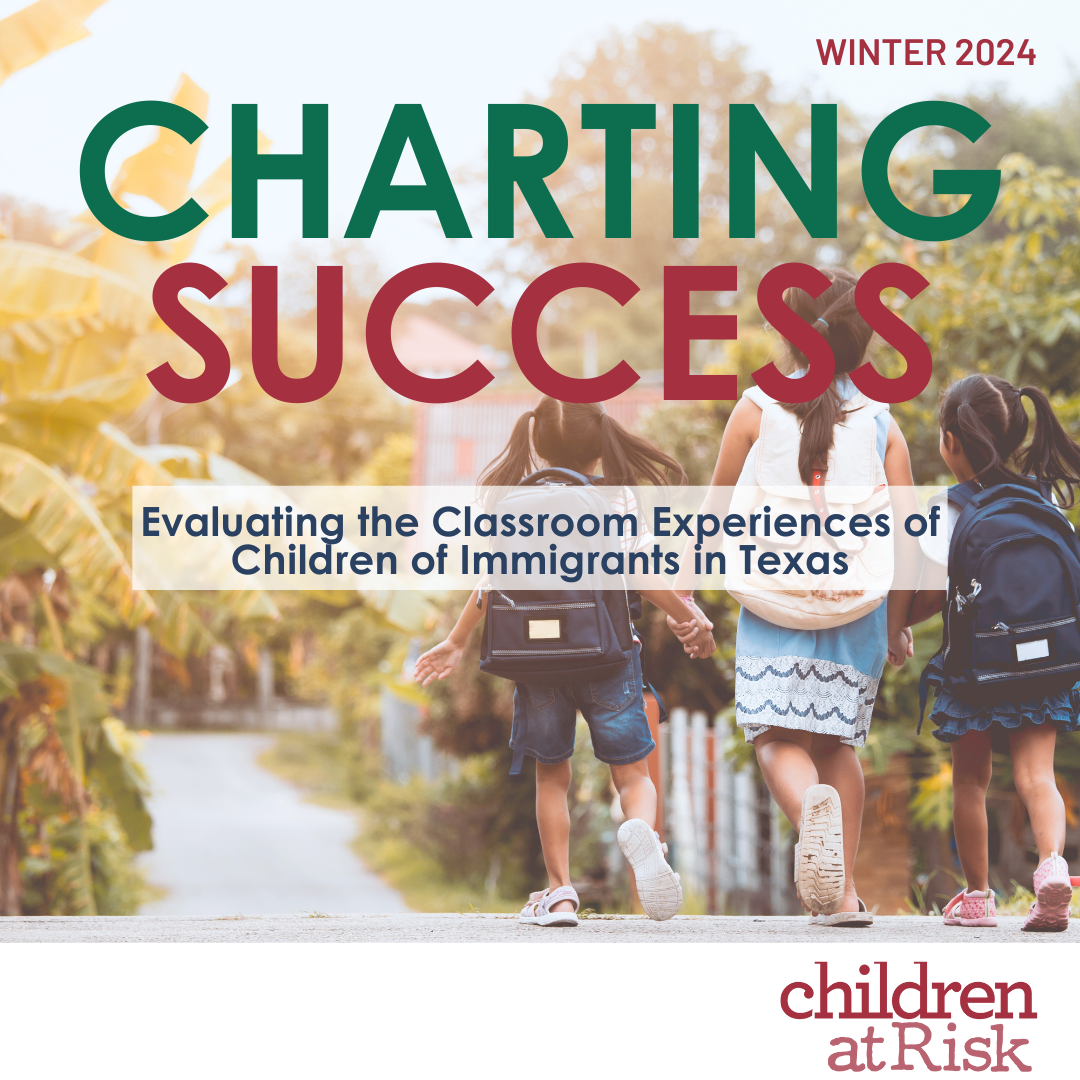
The Children’s Immigration Network is CHILDREN AT RISK’s effort to focus on children of immigrants. Our vision is for the state of Texas to offer a welcoming environment for immigrants and refugees where children of immigrants can integrate and access the resources they need to learn, grow and thrive. While the diversity of our immigrant community enriches our state, it also adds complexity to the strategies needed to address their varied needs.
DEPORTATION NATION
By: Linda Corchado, Senior Director of the Children’s Immigration Network

The President-elect has a clear mandate to secure the border and to deport immigrants, as those enforcement priorities begin to flesh out in the coming weeks, Texas families, especially children, have little assurance that this Thanksgiving will not be their last with their family. Here, at CHILDREN AT RISK, we are closely watching how these enforcement priorities will flesh out in the coming weeks.
While many Americans support the idea that criminal immigrants should be deported, many do not know that the very act of entering the United States without inspection is a criminal offense.
This means 11 million undocumented people living in the United States are targets. Vice-President Elect, J.D. Vance suggested starting with 1 million deportations a year. This would amount to an annual cost of $88 billion. What we do know so far is that Trump has confirmed his plans to use the military to assist in mass deportations. We also know that the Texas Land Commissioner has offered 1,400 acres to be used as a “deportation hub.”
From superintendents and early childhood centers who may have to cope with stranded children whose parents were detained during school hours, to employers, devastated by the loss of their workforce, the lack of nuance in Trump’s mass deportation priorities should worry us all, especially here in Texas where one in eight students are undocumented or living in a mixed-status household with at least one undocumented parent. Roughly 1.4 million U.S. citizens in the state have at least one undocumented family member. Undocumented families are intertwined in our communities and are significant contributors to our economy. In fact, undocumented workers helped Texas raise nearly $5 billion in tax revenue.
Next to California, our Texas schools received the most funding from the federal government to support our growing student population of emergent bilinguals, English language learners and newcomer students. While cities like Houston, Dallas and San Antonio have received the most newcomer and refugee students in the state, the borderland still has the highest emergent bilingual population. Losing students in our classrooms means schools will also lose critical funding. The last time the state Legislature increased per-student funding was in 2019.
It’s about our schools, it’s about our future workforce, but above all else, it’s about our families.
Deporting undocumented immigrants would separate four million mixed-status families and would slash their household income by an average of 62.7%. This Thanksgiving, imagine taking a photograph of the people you love the most around the dinner table. Then imagine them gone. Imagine an overwhelming sense of grief in your life, a pain that would have no other relief, than to have the impossible – to have your family back, as they are now.
This is how precarious it is to be a child of immigrants in America.
DATA PROFILE
Chronic absenteeism occurs when students miss at least 10 percent of days in a school year for any reason and it’s a key indicator of academic risk. Students in grades 8-12 who miss school are seven times more likely to drop out. In Texas, absenteeism rates have nearly doubled since the pandemic, affecting long-term outcomes like reading proficiency, high school graduation, and college enrollment.
However, emergent bilingual and English learner (EB/EL) students show stronger engagement than their non-EB/EL counterparts across our state. Lower rates of chronic absenteeism highlight an opportunity to seize, EB/EL students are engaged, they’re showing up in the classroom and we should respond in good measure by maximizing their strengths.
Our report celebrates strength-based approaches being utilized by educators across our state as our Texas teachers lead in this important mission. Find detailed insights here!
OUR EDUCATION REPORT
Here at CHILDREN AT RISK, we have been working hard on a new methodology to help us determine how emergent bilingual/English language learners and children of immigrants are faring in our Texas classrooms. We celebrate school districts across the state who are taking innovative approaches to support students, to help bridge the certified bilingual teacher to student ratio and support teachers in the field.
PARTNER PROFILE: COPING WITH DEPORTATION

We know that anxiety and fear will likely skyrocket for children of immigrants when faced with the threat of deportation. We reached out to our friends at Girasol about trusted resources on the topic:
- How to talk to a child worried about deportation and separation: http://fsustress.org/separation.html
- Guidelines for child welfare agencies to prepare for immigration enforcement: https://cimmcw.org/wp-content/uploads/Child-Welfare-Guidelines-for-Raids-Aug-2019.pdf
- Migrants parents’ guide to preventing family separation: https://www.womensrefugeecommission.org/wp-content/uploads/2020/04/Make-a-plan-english-FINAL-FINAL-6-29-17-1.pdf
IN CASE YOU MISSED IT…

The 89th Legislative Session is just around the corner and Texas will once again have the chance to prioritize the needs of children! This November we unveiled our 2025 Legislative Session Agenda, shared tips from advocacy experts, and highlighted how you can get involved to speak out and drive change for children this session!
